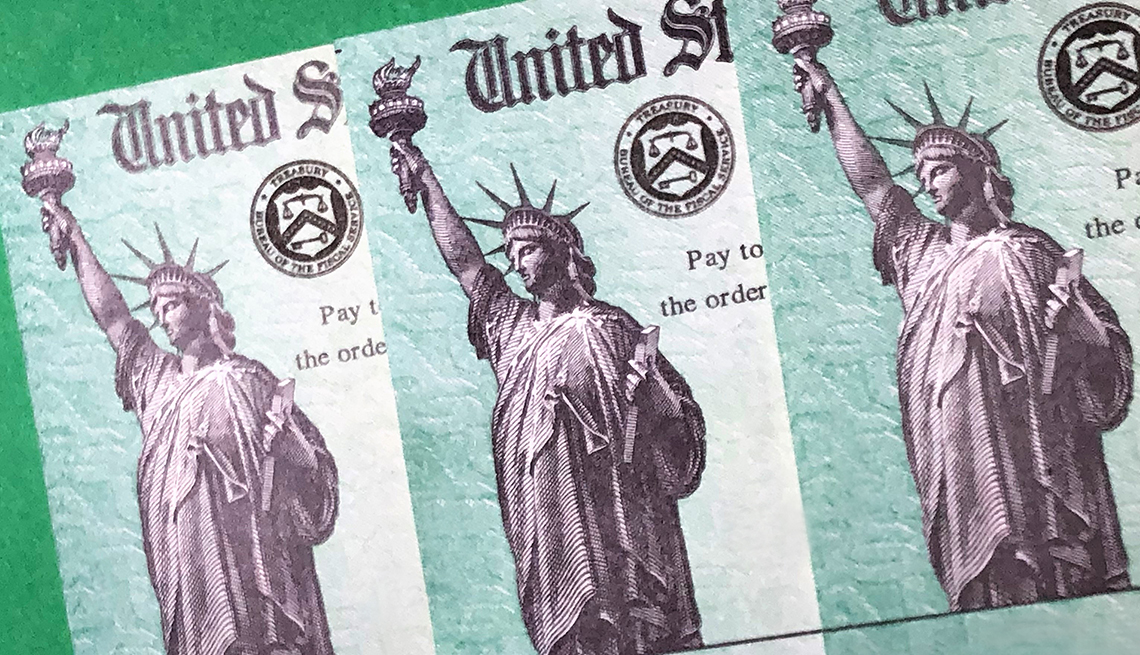
- Select a language for the TTS:
- UK English Female
- UK English Male
- US English Female
- US English Male
- Australian Female
- Australian Male
- Language selected: (auto detect) - EN
Play all audios:
By
John Waggoner
AARP En español Published May 27, 2021| Americans started seeing the third round of stimulus payments in their bank accounts on March 12. As of May 26, the IRS says it has sent 167 million stimulus payments, worth about $391
billion.
“Department of Treasury and the IRS are working hard to get relief payments out the door as fast as possible to the American people; people can expect to start seeing direct deposits hit
their bank accounts as early as this weekend,” said Jen Psaki, White House press secretary, in a press briefing on March 11, the day the $1.9 trillion American Rescue Plan was signed into
law. “And payments to eligible Americans will continue throughout the course of the next several weeks.”
The new stimulus relief legislation calls for a onetime payment of $1,400 to single adults. Married couples who file jointly will receive $2,800 total ($1,400 apiece). Families will get an
additional $1,400 for each eligible dependent, regardless of age. A family of four could get $5,600 in total payments. And like the second round of stimulus payments, the third round
specifically prohibits payments to anyone who died before Jan. 1, 2020.
There are more stringent income limits for the third round of stimulus payments. Those who filed their 2019 or 2020 federal taxes as a single taxpayer need to have had $75,000 or less in
adjusted gross income to get the maximum payment. For heads of household, the limit is $112,500, and for couples, the limit is $150,000. Payments are reduced gradually to the top limits:
$80,000 for single filers, $160,000 for joint filers and $120,000 for heads of household. (Use our Coronavirus Stimulus Check Calculator to estimate the amount you’ll receive.)
Projectedtimeline for sending third stimulus checks
The IRS delivered virtually all of the second round of stimulus checks in less than a month, starting Dec. 29, 2020, two days after then-President Donald Trump signed the $900 billion bill
into law.
Congress gave the IRS until Jan. 15, 2021, to issue the bulk of the 147 million payments so that the agency could quickly pivot to preparing for tax-filing season. After that, taxpayers were
instructed to claim any missing stimulus money from the first or second rounds on their 2020 tax returns in the form of a tax credit.
The third round of payments hit at the height of the 2020 tax-filing season, and it was difficult for the IRS to ship all of the stimulus checks in less than a month and process millions of
returns at the same time. To give itself some breathing room, the IRS moved the deadline for filing and paying federal income taxes to May 17.
The third stimulus payments are being rolled out in tranches, or groups, by direct deposit and through the mail as a check or debit card. The vast majority of all economic impact payments
(EIPs) will be issued by direct deposit, the IRS says, and it will continue to send batches of EIPs every week.
March 12The IRS, via the Treasury, sent the first tranche of payments on March 12, a total of 90 million payments worth about $242 billion. Most of these payments went to people who had filed 2019
or 2020 federal income taxes, or who had used the online IRS Non-Filers Tool.






